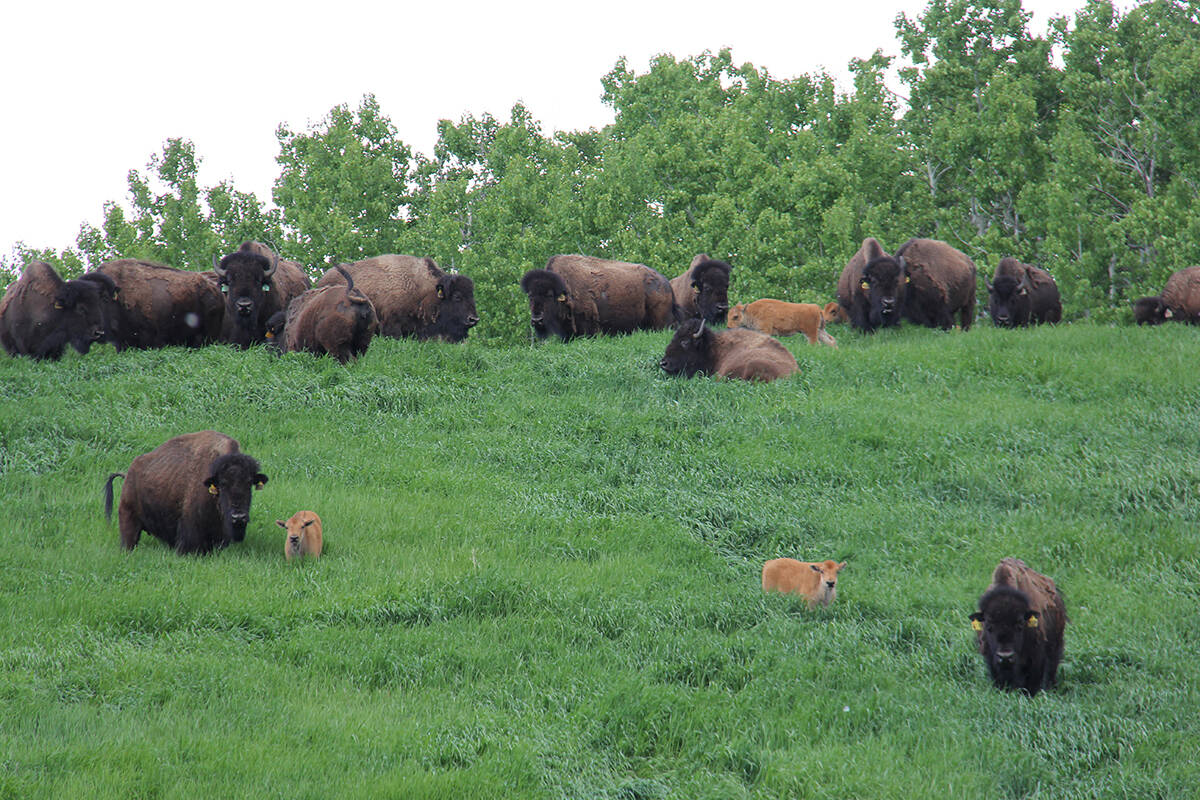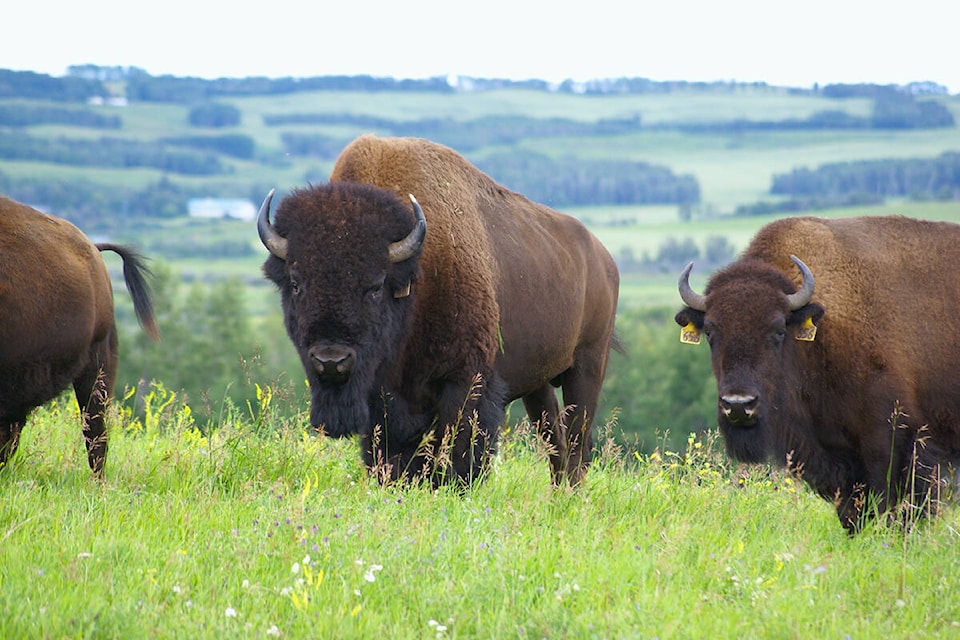By Stewart Staudinger, MFL Bison Ranch
Considering the drought challenges of the last few years in Central Alberta, it’s worth looking at strategies to improve drought resilience on farms and ranches. Regenerative agricultural practices contribute significantly to building drought resistance.
‘Effective precipitation’ describes precipitation entering the soil and leaving only through transpiration, or through the soil into natural aquifers. It does not include evaporation or surface runoff—both major issues with modern monoculture agriculture. Drought resilience is about increasing a farm’s effective precipitation.
It is worth noting that at a soil temperature of 21 degrees Celsius (70 degrees Fahrenheit), 100 per cent of moisture is used for plant growth. By 37 degrees Celsius (100 degrees Fahrenheit), that drops to 15 per cent, with 85 per cent lost to evaporation. At 46 degrees Celsius (115 degrees Fahrenheit) soil microbes begin to break down and at 60 degrees Celsius (140 degrees Fahrenheit), they die. 20cm (8 inches) of grass cover can reduce soil surface temperature to 8 degrees Celsius (15 degrees Fahrenheit) below the air temperature, and a layer of dead plant litter found on healthy soil reduces it even more. Tillage increases soil temperature through exposure to direct sunlight. A single tillage pass causes the evaporation of 2.54cm (1 inch) of rain. In Central Alberta, an exposed surface soil temperature of 50 degrees Celsius in direct sunlight is not uncommon.

Soil organic carbon (SOC) is a moisture sponge. 1 per cent of SOC in the top 6 inches of the soil profile has the water storage capacity of 45,000 gal/acre (423,000L/ha). This moisture, if protected from evaporation, will not leach away to aquifers and is available for plant growth. Regenerative ranchers in Central Alberta have increased SOC from <2 percent to <8 percent in 20 years, according to research by Texas A&M scientists.
Using these five principles of soil health, farmers and ranchers can increase their infiltration rates and water holding capacity while reducing their loss to evaporation and leaching:
- Minimise mechanical/chemical disturbance
- Maximise plant biodiversity
- Maintain a growing root in the soil for as long as possible
- Minimise exposed soil
- Integrate livestock, farmers and ranchers can increase their infiltration rates and water holding capacity while reducing their loss to evaporation and leaching
They rarely publicly toot their own horn, but Tamara Ranch, a few miles southeast of Red Deer are the subject of Texas A&M’s research. Driving past Tamara on a dry August day was eye-opening—their neighbour’s land was brown and bare—but Tamara’s pastures had 18 inches (46cm) of green growing grass supporting very happy cows.
So, when out shopping for your family, consider the production of the food you buy. A couple pounds of grass-fed beef, bison or lamb helps ranchers shift to regenerative management and avoiding foods grown as monoculture crops helps move the needle in the right direction.
Support regenerative farming in Central Alberta by shopping at Ranch Gate Market, 380-49 Hinshaw Dr. in Sylvan Lake.
